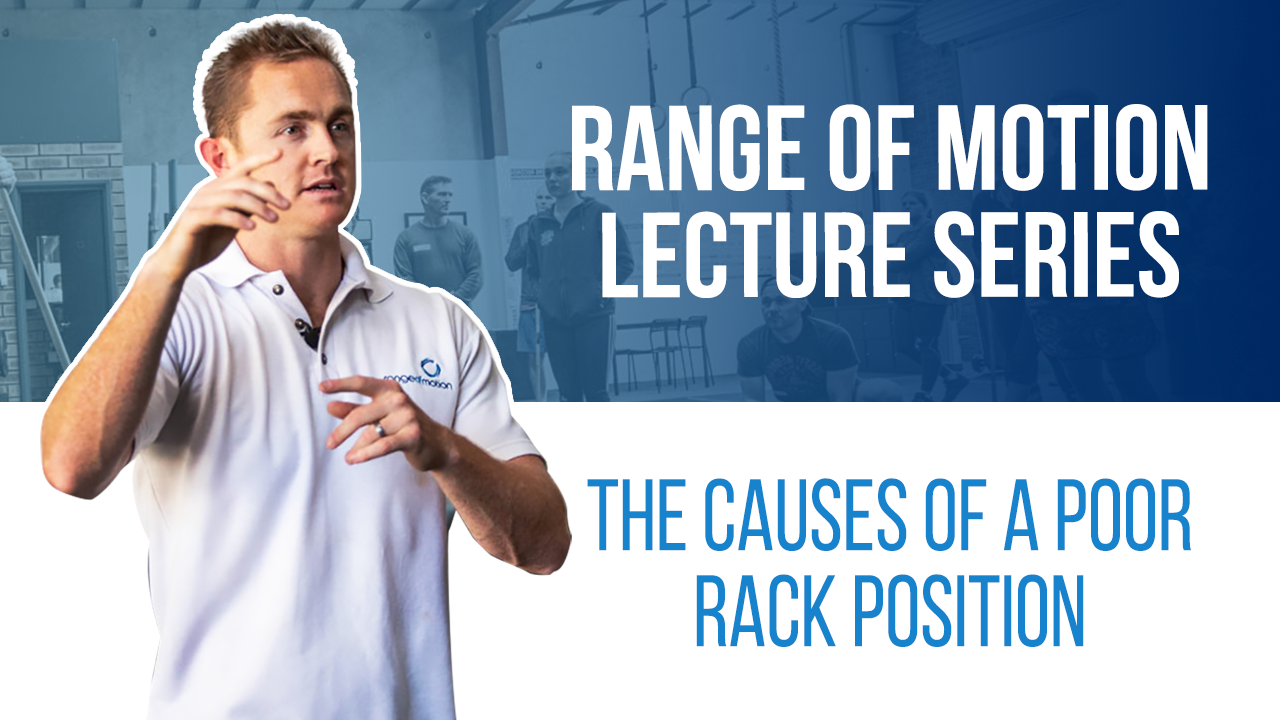Transcribed from video:
– Rack position, little more simple this one and you guys are going to see if you can work this out. So, again, broadly speaking we call them flexors, extensors, I don’t need to know science-y Latin names of muscles. If you’re on the rack position and your elbows drop, what is too tight? Something responsible for dropping the elbows. So this is called shoulder extension. So the shoulder extensors are too tight. Who cares what they’re called, we’ll talk about how to fix that later. They could be too tight, what could be too weak? Something involved in pulling the elbow up. Yeah, too weak. It could be a flexibility issue, a strength issue, a stability issue, a combination of them. So it could be a little bit of both. This one, a little more complex. This is someone’s rack position for the front squat. Has everyone seen, it’d normally be typically a thirty plus to middle-aged guy whose not got a lot of exercise background maybe they’re new to it and they’ll squat like this. Everyone seen that, probably quite upper-body strong. Maybe back in the day when they did exercise they did a lot of bench press. That sort of thing there where they squat like that. What is tight here? Can we be more specific?
– [Audience Member] Alignment of the wrists. If you can’t pull the other…
– Yep, so that could be part of the problem. That will often make them drop here. Specifically elbow coming out wide. What’s this movement called? Internal rotation, because what we’ve got, when the elbows are going wide and the hand is coming in, can you see how that’s internal rotation? So we’re getting pulled into internal rotation which means that our what are tight? Internal rotators. These are the things that internally rotate. If the things that internally rotate are tight, internal rotators are tight and we end up in this position. And this diagnoses a tightness through internal rotators. Which, can you guys see, is much more applicable than “okay see how far you can go, let’s measure that range, let’s see how far you can go”. It’s applicable because it’s the movements that we actually need to be doing, internal rotation. What could be weak or underactive in this example? Remember this is… External rotators, if the internal rotators are too tight the external rotators here could be too weak. So for this athlete with this fault we need to prescribe them exercises to lengthen their internal rotators and strengthen their external rotators.





